born in Hanover, Germany
The Dada artist Kurt Schwitters’s ground-breaking Merzbau, completely misunderstood in its time, is now regarded as the precursor of contemporary artforms like Installation, Environment, Assemblage and site-specific art.
In the winter of 1918-19, Schwitters began to make collages, probably influenced by the work of Hans Arp. In the spring of 1919, Schwitters began to make assemblages from scraps of refuse, including one that included a snippet containing the four letters MERZ, cut from an advertisement for the Kommerz- und Privatbank, as he revealed many years later. Merz was soon to become a kind of brand name for almost all his activities and indeed, from 1922, he even began to refer to himself as Kurt Merz Schwitters or simply Merz. “What I had learned at the academy was of no use to me… Everything was wrecked anyway and what counted was to construct something from the fragments. But that is Merz… It was a reflection of the revolution within me…”
http://www.dreamideamachine.com/en/?p=14026
“generally acknowledged as the twentieth century’s greatest master of collage”
Gwenda Webster
 1944
1944
Kurt Schwitters was born on June 20, 1887 in Hanover, Germany. He was the only child in a middle-class family. As a boy, he travelled with his father to the 1900 World’s Fair in Paris. When he was 14, he had his first epileptic fit, signifying the start of a recurring condition that the artist felt continually impacted how he related to the world.”
Directly affected by the depressed state of Germany following World War I, and the modernist ethos of the Dada movement, Kurt Schwitters began to collect garbage from the streets and incorporate it directly into his art work. The resulting collages were characterized by their especially harmonious, sentimental arrangements and their incorporation of printed media. He actively produced artistic journals, illustrated works, and advertisements, as well as founding his own Merz journal. He wrote poems and musical works that played with letters, lacing them together in unusual combinations, as he’d done in the collages, in the hope of encouraging his audience to find their own meanings. His multiple avant-garde efforts culminated in his large merzbau creations. These works, collaborations with other avant-garde artists, would start with one object to which others were added, causing the whole piece to change and evolve over time, growing to great proportions that forced the viewer to actually experience, rather than simply view, the art.
The Art Story



traces

Poster for Dada Matinee, 1923

1920
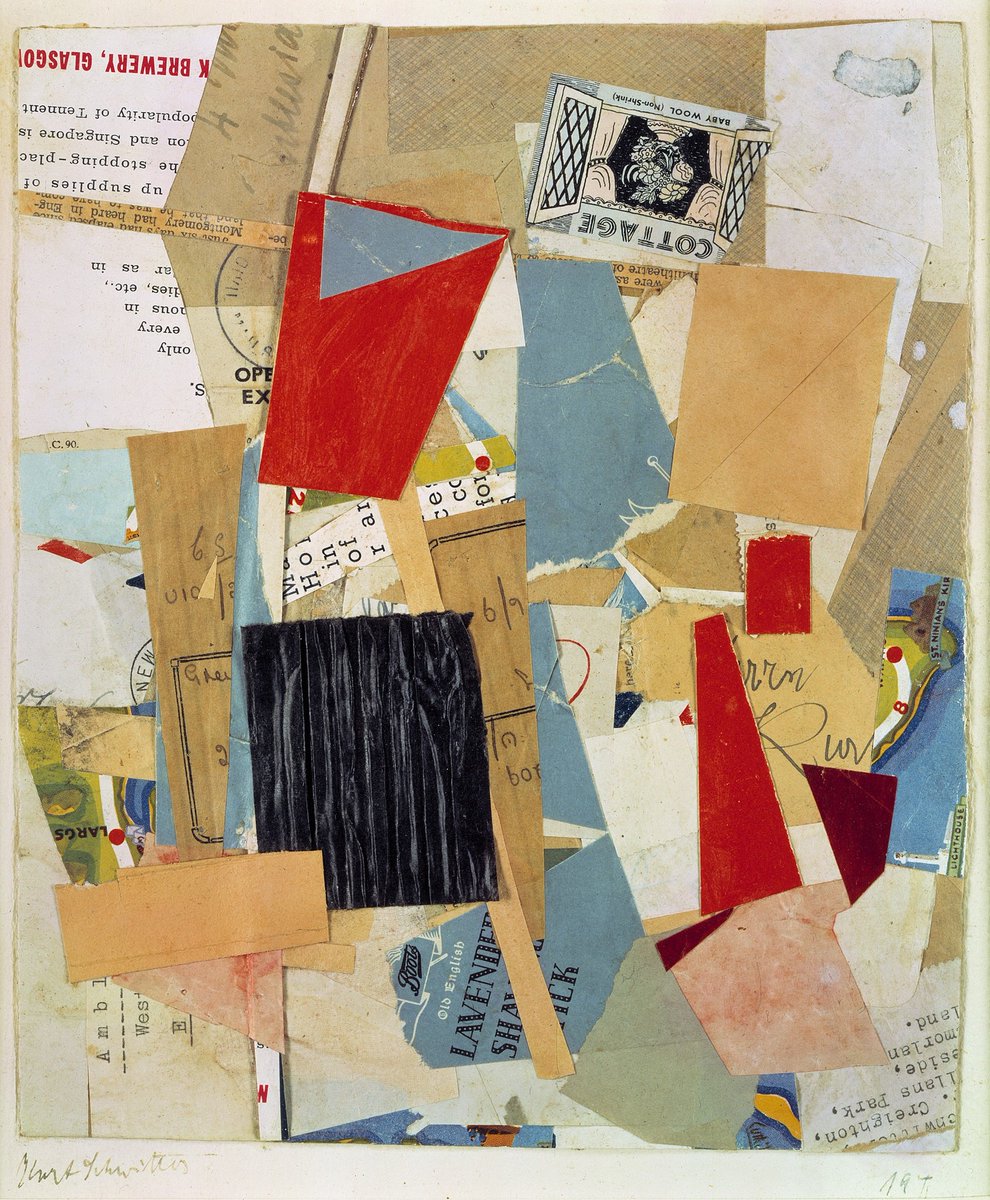
Cottage (1946)
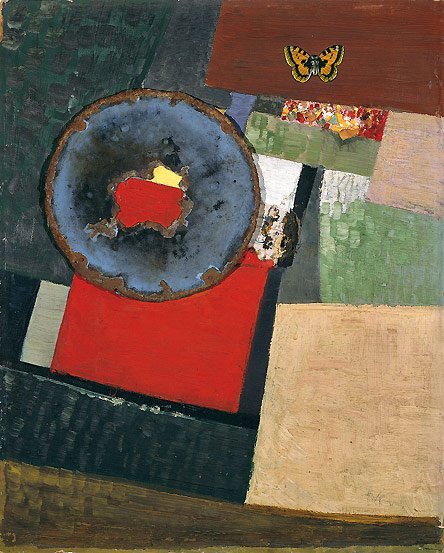
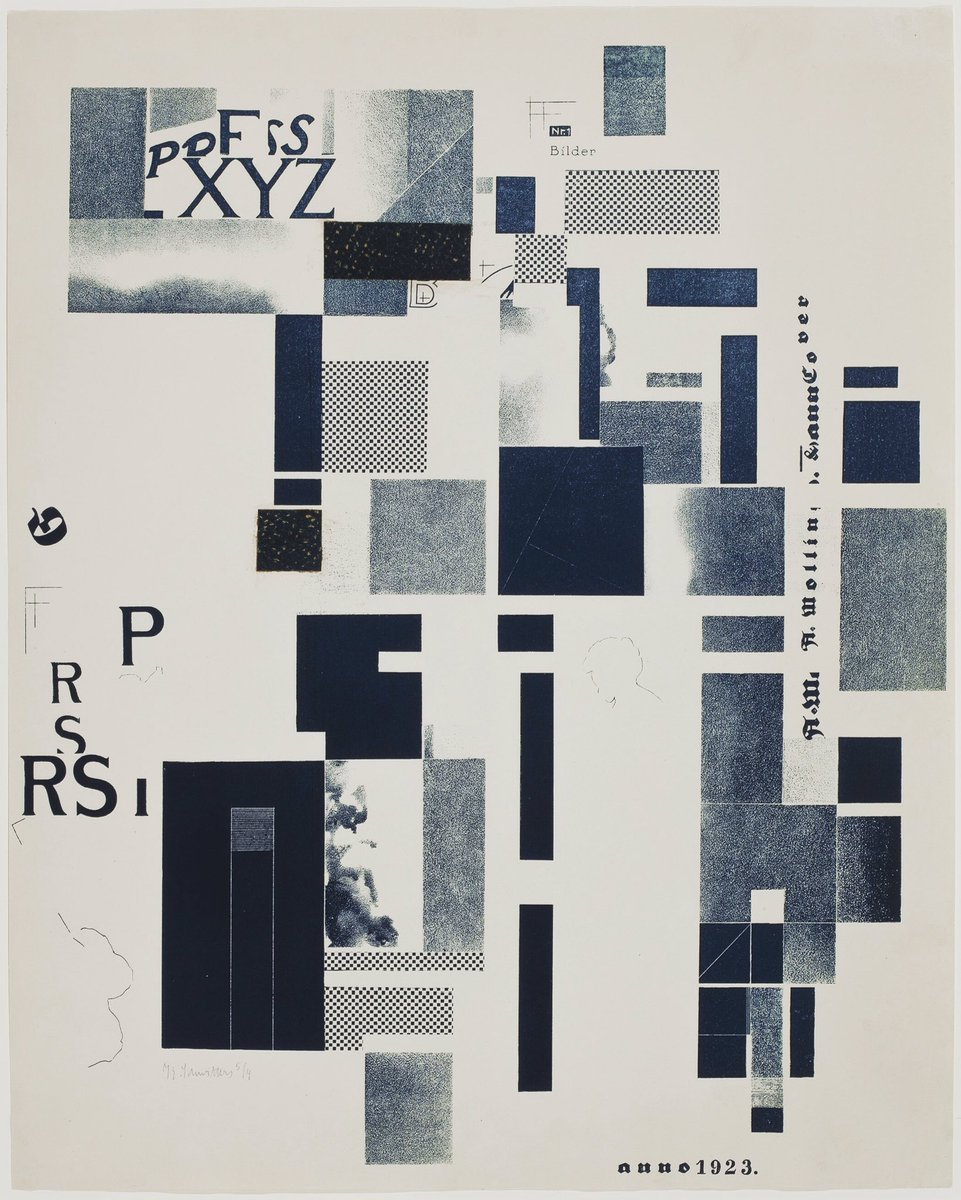
Untitled, 1923
Kurt Schwitters invented the art form known as Merz (the art of everything). He pioneered collage, was an innovative graphic artist and typographer, performance artist and poet, as well as landscape and portrait painter. His use of recycled debris in his collage and sculptural installations was particularly antagonistic to the Nazis, with their championing of traditional art forms. Along with other “degenerates” his work was featured in mock exhibitions staged by the Nazis. He fled Germany, first to Norway and then, when Hitler invaded, caught the last fishing boat out of Scandinavia, survived a torpedo attack and landed in Scotland.
Like other “degenerate” artists, he became part of the movement that spread Modernism throughout the Western world. He died in 1948.
http://www.independent.co.uk/arts-entertainment/art/news/lakes-tribute-for-artists-who-fled-hitler-8210443.html
"I cannot make a living out of art and I now occupy myself with a variety of things. Of course, I continue to paint and to nail, but in particular I write grotesques and art reviews for newspapers, I organize evenings and draw commercial art for newspapers." (1926) "I know that I am an important factor in the development of art and shall forever remain so. I say this with great emphasis, so that one can not say, at a later date: 'The poor fellow had no inkling of how important he was'. No I am no fool, nor am I timid. I know full well that the time will come for me and all other important personalities of the abstract movement, when we will influence an entire generation. However, I fear that I shall not experience this." (1931) "The medium is as unimportant as I myself. I take any material whatsoever if the picture demands it. When I adjust materials of different kinds to one another, I have taken a step in advance of mere oil painting, for in addition to playing off color against color, line against line, form against form etc., I play off material against material, wood against sack clothes." "Art is a spiritual function of man, which aims at freeing him from life's chaos. Art is free in the use of its means in any way it likes, but is bound to its laws and to its laws alone."
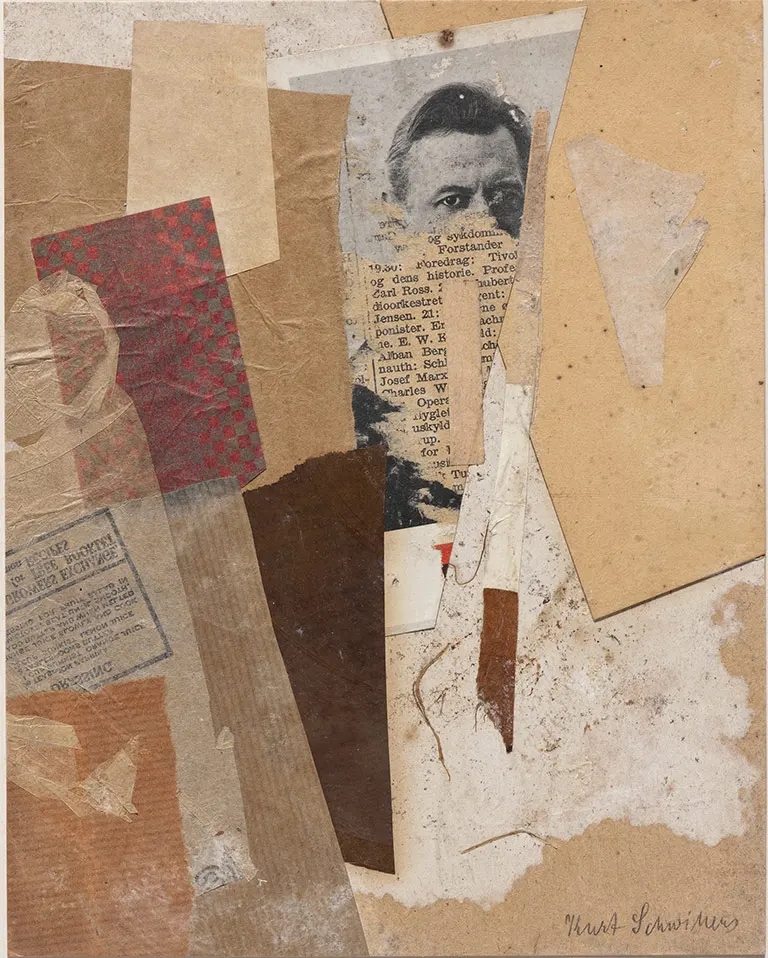
Photograph: Herling/Gwose/Kurt and Ernst Schwitters Stiftung, Sprengel Museum, Hannover
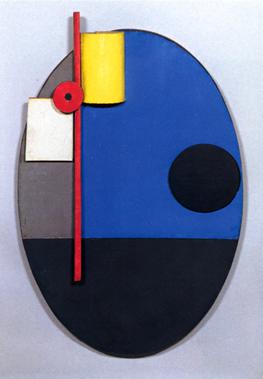

Kurt Schwitters
Merzbau
Photo: Wilhelm Redemann, 1933 © DACS 2007
One of the most important art works and myths in modern art, the inspiration for many installation artists, and still one of the most well known and published works by Kurt Schwitters (1887–1948), the Merzbau, in fact, no longer exists. It was destroyed in a British air raid in October 1943 in Hannover. By 1937, when Schwitters left his hometown to follow his son into exile in Oslo, the Merzbau comprised a total of eight rooms in his house at 5 Waldhausenstraße in Hannover. Most of the surviving photographs seem to have been taken in the space of the ‘Merzbau proper’ (‘eigentlicher Merzbau’), in which Schwitters is known to have begun working at the beginning of 1927.
courtesy of https://www.tate.org.uk/research/publications/tate-papers/08/kurt-schwitters-reconstructions-of-the-merzbau
Thanks also to Wikiwand

